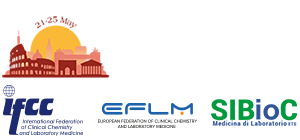Day 1
Monday 22 May
CORPORATE WORKSHOPS
![]()
- 13.00-14.00 ROOM 2 – Lunch Workshop 2
HIGH-SENSITIVITY CARDIAC TROPONIN I: HOW LAB BASED AND POINT-OF-CARE TESTS CAN IMPROVE PATIENT OUTCOMES
Chair: Professor Jean-Paul Cristol
13.00-13.05 – Welcome and Introduction of the topic and speakers
13.05-13.25 – Triage strategies and clinical performance of POC and lab based tests applying the ESC 0-1 hour algorithm – Jasper Boeddinghaus
13.25- 13.45 – High-sensitivity cardiac troponin I: lab based and POC tests advantages and challenges – Professor François Roubille
13.45-14.00 – Q&A and close – Professor Jean-Paul Cristol
Learning Objectives:
– Educate on the roles and differences between lab based and POC technologies
– Define a framework for appropriate test utilization to improve patient outcomes using different clinical strategies
– Describe how applying rapid and safe rulein and rule-out strategies efficiently supports patient triage: the clinical performance with the ESC 0-1 hour algorithm observed in studies.

- 13.00- 14.00 ROOM 3 – Lunch Workshop 3
LEVERAGING INNOVATIVE TECHNOLOGY TO OPTIMIZE QUALITY IN POINT-OF-CARE BLOOD GAS TESTING
Chair: Davide Colombo
13.00-13.20 – Mitigating Preanalytical Errors with a Total Quality Assurance Program – James H. Nichols
13.20-13.40 – Patient-Based Real-Time Quality Control (PBRTQC) – Sten Westgard
13.40-13.55 – Optimal Strategies to Achieve Higher Quality Standards using Data Management Solutions – Tony Cambridge
Learning Objectives:
– Discuss sources of preanalytical errors in point-of-care testing
– Identify benefits of automated, continuous quality assurance vs intermittent liquid quality control (QC)
– Identify strategies to address the risks of variability in sample collection, for enhanced patient safety
– Review the history of QC and novel Patient- Based, Real-Time QC
– Review optimal strategies to achieve higher quality standards with proactive tracking and monitoring of KPIs, using data management solutions.

- 13.00-14.00 ROOM 4 – Lunch Workshop 4
PRE-ANALYTICAL MASTERY: NEXT-LEVEL SAMPLE PROCESSING TECHNIQUES
Chair: Prof. Mario Plebani
13:00-13:10 – Pre-Pre-Analytical Mastery: Next-Level Sample Processing Techniques – Prof Plebani
13:10-13:25 – Leveraging automation and full sample traceability solutions to advance the preanalytical game – Prof. Bruno Mengozzi
13:25-13:45 – ProTube™: Success story at Hospital Clinic of Barcelona – Prof. J.L. Bedini
13:45-14:00 – Q&A session
Learning Objectives:
– Understand the challenges of the preanalytical phase and how sample quality influences analytical test results
– Appreciate the benefits automation solutions bring to pre-analytical and analytical workflows
– Case study, Hospital Clinic of Barcelona: how the ProTube™ system improved the quality of the Total Testing Process by reducing pre-analytical errors and Total Turnaround Time.

- 14.30-15.30 ROOM 1 – Educational Workshop 1
FROM EVIDENCE TO PRACTICE: HOW MDW IMPLEMENTATION CAN IMPACT SEPSIS DETECTION AND RISK ASSESSMENT
Chair: Dr.Giustino Parruti
14.30-14.55 – Performance of MDW for severe infection and sepsis detection in the Emergency
Department of Udine Teaching Hospital – School of Medicine – Francesco Curcio
14.55-15.20 – Case Studies: MDW experience in the University Hospital 12th October, Madrid – Sandra Gomez Rojas
Learning Objectives:
Learn how Udine University Hospital incorporated MDW in their standard operating procedures, transitioning its application in early sepsis detection from clinical studies to medical practice.
In addition, the experience from University Hospital 12th October will share benefits arising from Monocyte Distribution Width (MDW) use in daily routine. MDW is the only regulatory cleared hematological biomarker available with the first blood draw that helps to identify severity of infection and risk of sepsis in adult patients in ED.

- 14.30-15.30 ROOM 2 – Educational Workshop 2
EMPOWERING LABS WITH AN INTEGRATED PLATFORM OF MEDICAL ALGORITHMS
Chair: Prof. Dr. Ralf Lichtinghagen
14:30 – The case for a healthcare digital support system: an enabler of digital algorithms and workflow optimization – Christoph D. Spinner.
14:50 – GAAD: an oncology decision making support algorithm – Prof. Dr. Ralf Lichtinghagen
15:10 – ColonFlag: how to prioritize and care for patients at high risk for developing colon cancer – Eran Choman
Learning objectives:
Clinical decision making is supported by several different processes that need to seamlessly come together in order to provide the relevant information needed for diagnosis, therapy selection and/or patient management. Today, there is an emerging momentum around using digital solutions to effectively support clinical decision making in cancer risk stratification, treatment selection and patient monitoring. This session is aimed at giving an overview of the currently available algorithms and how they can be integrated in today’s workflows through an easy to use and accessible platform.
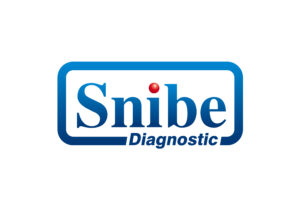
- 14.30-15.30 ROOM 3 – Educational Workshop 3
SUSTAINABILITY AND VALUE-BASED LABORATORY MEDICINE AND SERUM BIOMARKERS OF LIVER FIBROSIS
Chair: Prof. Tomris Ozben
14:30 – Sustainability and value-based laboratory medicine – Prof. Mario Plebani
15:00 – Determination of Serum Biomarkers of Liver Fibrosis: Validation Study and Comparison with Liver Biopsy – Prof.Tommaso Trenti
Learning Objectives:
– To understand current recommendations for green and sustainable medicai laboratories
– To understand the concept of value in laboratory medicine
– To understand the usages of serum biomarkers of liver fibrosis in comparison with liver biopsy in NAFLD or NASH patients.
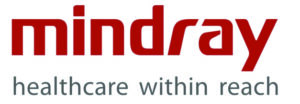
- 14.30-15.30 ROOM 4 – Educational Workshop 4
SCD14-ST AND NEW GENERATION INFLAMMATORY BIOMARKERS
Chair: Massimiliano M. Corsi-Romanelli
14:30-15.30 – sCD14-ST and New Generation Inflammatory Biomarkers – Emanuela R. Galliera
Learning Objectives:
– Definition and function of inflammatory and infection biomarkers
– New generation of infection biomarkers
– Diagnostic and prognostic application of sCD14 -ST and new generation biomarkers in different clinical contexts of infection
– Diagnostic and prognostic value of sCD14- ST in orthopaedical infection, ranging from prosthetic joint infection to osteomyelitis.
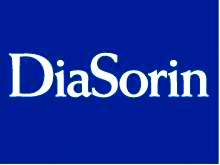
- 14.30-15.30 ROOM 5 – Educational Workshop 5
NEW TESTING SOLUTIONS TO ENHANCE PATIENT MANAGEMENT IN SPECIALIZED INFECTION AT THE EMERGENCY
DEPARTMENT ADMISSION
Chair: Dr Kordo Saeed
14.30-14.40 – Introduction by the Chair
14:40-15.00 – MeMed BV®: An innovative diagnostic solution to expedite infection management and treatment decisions for emergency and urgent care patients – Adi Klein.
15:00-15.20 – Effectiveness of MR-proADM as prognostic marker in managing critically ill patients at the Emergency Department – Carlo Tascini
15:20-15.30 – Q&A
Learning Objectives:
– How to combine diagnostics and specialized infection solutions to enhance patient care at the Emergency Department
– Understand the benefits of combined diagnostic solutions in specialized infection: enhancing ED patient care and improving hospital resource allocation
– How to include MR-proADM testing in today’s standard of care
– The prognostic value of the 3 assays (MeMed, pro-ADM and PCT)
– MeMed BV®: how to expedite infection management.
Day 2
Tuesday 23 May
CORPORATE WORKSHOPS

- 13.00-14.00 ROOM 1 – Lunch Workshop 6
SETTING A NEW STANDARD FOR AUTOMATED IMMUNOASSAY – INNOVATIVE TECHNOLOGY DESIGNED FOR EVOLVING HEALTHCARE NEEDS.
Chair: Dr. Janet Eglin
13.00-13.05 – Welcome and Introduction
13.05-13.30 – Mayo University Hospital – experience of a new immunoassay analyser from a clinical and technical perspective – Mr Ray Divilley
13.30-13.55 University Hospitals Morecambe Bay – experience of a new immunoassay analyser from a clinical and technical perspective – Dr Andrew Brown
13.55-14.00 – Close
Learning Objectives:
Learn about the analytical and operational performance of a brand new, high throughput immunoassay analyser from Beckman Coulter. Hear more detail on the experience and studies performed by Mayo University Hospital and University Hospitals of Morecambe Bay.

- 13.00 – 14.00 ROOM 2 – Lunch Workshop 7
ADDRESSING THE CHALLENGES OF SPECIMEN TRANSPORT
Chair: Dr Brendan Meyer
13.00-13.05 – Welcome and Introduction
13.05-13.25 – Pitfalls and opportunities in sample transport to the hospital – Michael Cornes
13.25-13.45 – Challenges and quality control of pneumatic tube transportation – Janne Cadamuro
13.45-13.55 – Optimising specimen collection and transport – the role of BD – Brendan Meyer
13.55-14.00 – Close
Learning Objectives:
– Recognise the important role of specimen transport in the preanalytical pathway.
– Describe the complexity of specimen transport pathways, both in and outside of hospitals.
– Assess the impact that transport variables may have on specimen integrity and quality and how these can relate to performance indicators.
– Identify the ways that transport variables may be measured and their negative impacts minimised.

- 13.00-14.00 ROOM 3 – Lunch Workshop 8
EMPOWERING CLINICAL DIAGNOSTICS WITH MASS SPECTROMETRY
Chair: Prof. Dr. med. Michael Vogeser
LC-MS/MS in the clinical laboratory – challenges and advances in serum steroid hormone analysis – Prof. Esa Hämäläinen
Mass Spectrometry as Enabler for Next Generation Diagnostics and Precision Medicine – Prof. Dr. Christa M. Cobbaert
Mass Spectrometry and the concept of drugomics and clinical exposomics – Prof. Dr. med. Michael Vogeser
Learning objectives:
The technological advance of mass spectrometry (MS) resulted in the introduction of methods with information rich and highly paralleled detection paired with high sensitivity and unrivaled specificity. This created a higher demand for greater accessibility in routine. Numerous disease areas benefited enormously from clinical MS development. MS methods became routine and preferred techniques in many clinical laboratories for specific patient cohorts. This session is aimed at giving insights into MS methods that help to resolve challenging analytical demands for specific patient cohorts and how this can support our understanding of health, disease prevention and individualization of therapy.
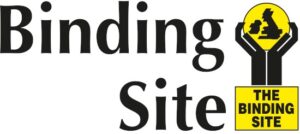
- 13.00-14.00 ROOM 4 – Lunch Workshop 9
CLINICAL IMPACT OF THE EXENT® SOLUTION*, AN INNOVATION FOR IMMUNOGLOBULIN IDENTIFICATION & QUANTIFICATION
Chair: Dr.Stephen Harding
13.00-13.20 – Development & performance of the fully automated EXENT platform – Mark Perkins
13.20-13.40 – How the EXENT solution could support monoclonal gammopathy patient in clinical practice – Dr. Noemí Puig
13.40-14.00 – Case Study: EXENT system from the laboratory to the clinic – Dr. Cristina Agulló Roca
Learning Objectives:
– Review the current practices of monoclonal gammopathy management, including the challenges and opportunities
– Learn about blood measurement for M-Proteins, and their sensitivity and specificity
– Hear from a user’s experience of a future Mass Spectrometry solution*, in clinical practice
– Understand how a Mass Spectrometry solution could address an unmet clinical need in monoclonal gammopathies
*This product has not been cleared for sale in the USA, EU or other countries and is not commercially available and future commercial availability cannot be guaranteed.
![]()
- 13.00-14.00 ROOM 5 – Lunch Workshop 10
ADVANCES IN BIOMARKERS FOR THYROID AUTOIMMUNE DISEASES.
Chair: Jeffery A. Houtz
13.00-13.05 – Welcome and Introduction of the topic and speaker – Jeffery A. Houtz
13.05-13.30 – TSH Receptor Antibodies – Relevance & New Developments – George J Kahaly
13.30-13.45 – Evolution of Cell-based Bioassays for TSI and TBI – Jeffery A. Houtz
13.45-14.00 – Q&A and close – Jeffery A. Houtz
Learning Objectives:
Antibodies to the thyrotropin receptor (TSH-R-Ab) play an important role in the pathogenesis of autoimmune thyroid disease (AITD). Measurement of TSH-R-Ab can be done with either immunoassays that detect specific binding of Ab to the TSH-R or cell-based bioassays that also provide information on their functional activity and potency. We now are entering an era in which bioassays for TSH-R-Ab can be measured routinely by virtually any clinical laboratory.
This workshop will:
– Introduce the clinical challenges related to thyroid autoimmune diseases
– Demonstrate the challenges with current diagnostic tests
– Create awareness about the importance and availability of TSI/TBI bioassays
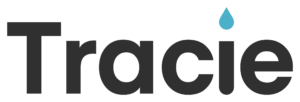
- 14.30-15.30 ROOM 1 – Educational Workshop 11
DIGITAL LAB – HOW TO AND WHY?
Chair: Dr. Alexander von Meyer
14:30-14:50 – Digitalizing preanalytics – hospital perspective. Dr. Henk Ruven
14:50-15:10 – Digitalizing preanalytics – private lab perspective. Olivier Garnier
15:10-15:30 – Implementing digitized processes – an experience sharing. Chiara Carrisi
Learning objectives:
Dr. Henk Ruven of the Dept. Of Clinical Chemistry, St. Antonius in Ziekenhuis (NL) will share valuable insights into pitfalls that proved to be hurdles when digitalizing an in-house lab. He will provide examples of real-life scenarios and provide guidance on how to overcome them. Olivier Garnier of Laboratoire de Biologie Médicale BIOMEDILAM (FRA) will present the process of digitalizing preanalytics from the perspective of a private lab. He will shed light on obstacles and advantages one might face during the process and how to incorporate digitalized processes into your day-to-day operations. Chiara Carrisi of Santagostino Lab (IT) will dive into their 2021 objectives that led them to seek out a partnership with GBO and Tracie to help implement digitized processes in their day-to-day operations. She will share her experience and elaborate further on how digitalization has proven to not only improve the experience of staff but especially their patients and how this approach sets them apart from other providers.

- 14.30-15.30 ROOM 2 – Educational Workshop 12
NO MORE HIDDEN INFECTIONS: NEW APPROACHES TO HIV AND VIRAL HEPATITIS SCREENING
Chair: Claudio Galli, MD PhD
14.30-14.35 – Introduction – C. Galli
14.35-14.57 – Sustained 97% opt-out HIV testing in the Emergency Department: Getting to zero AIDS – Ian Cormack
14.57-15.19 – Identifying Untreated Hepatitis B and Hepatitis C via Opt-out Screening Program in Urban ED Settings – Gaia Nebbia
15.19-15.30 – Discussion
Learning Objectives:
Infections by human immunodeficiency virus (HIV) and by hepatitis B (HBV) and C (HCV) viruses still represent a major health issue as WHO reported almost 2 million deaths worldwide in 2020 for the three infections combined. Reducing the disease burden for HIV and HBV and eventually eradicating HCV requires screening campaigns targeting the ‘silent’ infections and bringing the infected individuals to treatment. The implementation of an opt-out screening for patients admitted to the emergency department (ED) with an immediate linkage to care for infected individuals has been demonstrated both effective and sustainable. This workshop will allow attendees to:
– Update their knowledge on the disease burden from HIV, HBV and HCV infections
– Understand the current hurdles and limitations in finding ‘silent’ infections
– Recognize the operative and clinical advantages of opt-out screening programs
– Learn how reflex testing for HCV may increase the yield of screening programs
– Appreciate the contribution of the clinical laboratory on the viral elimination programs.
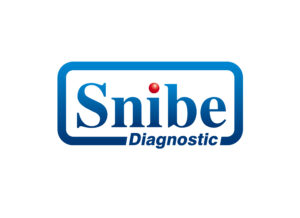
- 14.30-15.30 ROOM 3 – Educational Workshop 13
UPDATE ON 25-OH VITAMIN D MEASUREMENT AND GROWTH MARKERS
Chair: Prof. Khosrow Adeli
14.30-14.35 – Welcome and Introduction
14.35-15.00 – Update on 25-OH Vitamin D Measurement and Metabolites – Prof. Etienne Cavalier
15.00-15.25 – Growth Markers in Dwarfism & Gigantism – Dr. Waleed Tamimi
15.25-15.30 – Close
Learning objectives:
– Understand the different metabolite pathways of vitamin D
– Interpret vitamin D concentrations in different clinical contexts
– To review available growth biomarkers and their use in evaluation patients with dwarfism and Gigantism.
– To understand the physiological relationship between Growth hormone (GH) and Insulinlike growth factor 1 (IGF 1)
– To learn the best immunoassay methods for measuring GH and IGF 1 levels in the blood.

- 14.30-15.30 ROOM 4 – Educational Workshop 14
MACHINE LEARNING IN HEMATOLOGY AUTOMATION
Chair: Antonio Brattoli
14.30-14.35 – Welcome and Introduction
14.35-15.25 – Machine Learning in Hematology Automation – Sergio Bernardini
15.25-15.30 – Close
Learning Objectives:
– Introduce the application of Machine Learning in the Clinical Laboratory and in particular in Automated Hematology
– Explore the positional indexes and the morphological tools that together with the blood cells counts represent a powerful tool
to predict hematological diseases and sepsis
– Discuss how Machine Learning tools will impact Automated Hematology in the next future.

- 14.30-15.30 ROOM 5 – Educational Workshop 15
THE IMPORTANCE OF FLC FOR DETECTING AND MONITORING MONOCLONAL GAMMOPATHIES
Chair: Prof. Michele Mussap
14.30-14.35 – Introduction. M. Mussap
14.35-14.55 – Clinical use of FLC testing in Multiple Myeloma and AL Amyloidosis – G. Palladini
14.55-15.15 – Methods for FLC quantification – M. Orth
15.15-15.30 – Discussion
Learning Objectives:
– Understand the interest of free light chains as marker in patients with monoclonal gammopathies
– Describe the clinical use of free light chains in multiple myeloma and AL Amyloidosis
– Learn more about FLC quantification in laboratory routine
Day 3
Wednesday 24 May
CORPORATE WORKSHOPS

- 13.00-14.00 ROOM 1 – Lunch Workshop 11
THE INSTRUMENTAL ROLE OF THE CLINICAL LABORATORY IN IDENTIFYING HIGH-RISK PATIENTS WITH NAFLD:
A SEQUENTIAL ALGORITHM TO DETECT ADVANCED LIVER FIBROSIS
Chair: Jean-Charles Clouet
13.00-13.10 – Introduction by the Chair
13.10-13.30 – Non-alcoholic fatty liver disease (NAFLD): Burden of the disease and recommendations for the diagnosis and management of patients at risk – Prof. Jérôme Boursier
13.30-13.50 – Performance of a sequential laboratory algorithm associating fibrosis-4 index (FIB-4) and the Enhanced Liver Fibrosis (ELF) Test to detect advanced liver fibrosis related to NAFLD in type 2 diabetes patients – Dr María Patricia Sanz de Pedro
13.50-14.00 – Q&A
Learning Objectives:
Understand the health and societal impacts of non-alcoholic fatty liver disease (NAFLD) and non-alcoholic steatohepatitis (NASH) which affects up to 25% of the population around the world Learn the value of noninvasive liver fibrosis tests to detect NAFLD patients with advanced fibrosis and to predict liver-related complications in NAFLD Learn the performance of a sequential laboratory algorithm including Fibrosis-4 index (FIB-4) and the Enhanced Liver Fibrosis (ELF) Test to assess the presence of advanced fibrosis in type 2 diabetic patients with NAFLD.

- 13.00-14.00 ROOM 2 – Lunch Workshop 12
THE VALUE OF EXPERIENCE IN COAGULATION AND AUTOIMMUNITY. WERFEN, POWERING PATIENT CARE
Chair: Francesco Curcio
13.00-13.10 – Introduction by the Chair
13.10-13.30 – The value of experience in coagulation and autoimmunity. Werfen, Powering Patient Care – Lars Kalfhaus
13.30-13.50 Present and future of Hemostasis Laboratory, dedicated automation and the value of specialization – Vicente Cortina
13.50-14.00 – Q&A
Learning Objectives:
Learn how a specialized company can support physicians and laboratorians in the autoimmunity and hemostasis field, with automatized and digital solutions. Explaining the benefits to have a dedicated automation for the hemostasis lab and a Data Management System to support the validation process and reduce the time to result for enhanced patient safety. Learn how to maintain and improve the knowledge of laboratory against the lack of resources and high technicians’ rotation (both in high specialized hospital and in a hub & spoke organization).

- 14.30-15.30 ROOM 1 – Educational Workshop 21
INTELLIGENT AUTOMATION FOR ALL
Chair: Prof. Harald Renz
14.30-14.35 – Chairman to Introduce first speaker
14.35-14.55 – First DxA 5000 Fit in the world, feedback from the Hospital of Calais – Dr Hervé Vermeulen
14.55-15.00 – Chairman to Introduce second speaker
15.00-15.20 – Worcestershire Acute Hospitals NHS Trust: Implementation DxA 5000 and its impact – Dr. Michael Cornes
15.20-15.30 – Q&A
Learning Objectives:
Learn about the Beckman Coulter DxA 5000 Family and direct customers experiences with the products. Learn about DxA 5000 implementations at customer sites, how the users have operated the DxA 5000 in their lab and the impact the DxA 5000 has had on their outcomes.

- 14.30-15.30 ROOM 2 – Educational Workshop 22
DELIVERING TRANSFORMATIONAL PATIENT-CENTRIC CARE THROUGH NEW BIOMARKERS AND NOVEL INDICATIONS.
Chair: Christos Varounis, MD, MSc, PhD
14.30-14.35 – Introduction – Dr C. Varounis
14.35-14.57 – Preventing cardiovascular disease through proactive, cost-effective and enhanced identification of cardiovascular risk – Dr Beth Abramson
14.57-15.19 – Reducing unnecessary costs, mitigating potentially unnecessary radiation exposure, and alleviating strained resources through improved management of patients with suspected mild TBI – Dr. Jevgenijs Kravcuks
15.19-15.30 – Discussion
Learning Objectives:
Health care systems are facing big challenges due to increased disease burden and corresponding costs. Novel biomarkers and new indications might provide better and more efficient patient-centric care in terms of primary prevention but also help on differential diagnosis in various disease states. Innovative biomarkers can have different applications such cardiovascular prevention and head trauma. More specifically, on the one hand, cardiovascular disease has been the leading cause of mortality worldwide for the past 20 years and the number of deaths reached 8.9 million in 2019. Therefore, preventative care is vital to achieve improved health outcomes, reducing disease burden and preserving health resources. On the other hand, around 2.5 million patients are diagnosed with traumatic brain injury (TBI) in Europe every year. The majority (80- 90%) of these cases are classified as mild, and only around 10% are likely to have any intracranial lesions visible on a computed tomography (CT) scan. However, CT scan is routinely used in evaluation of these patients, leading to many unnecessary scans being conducted. Therefore, novel blood biomarkers have been developed which can aid in reducing unnecessary costs, mitigating potentially unnecessary radiation exposure, and alleviating strained resources through improved management of patients with suspected mild TBI. This workshop will allow attendees to:
– Update their knowledge on the disease burden of certain diseases (CV diseases and TBI)
– Understand the value of biomarkers in the context of cardiovascular disease prevention
– Learn how the implementation of these cardiac biomarkers into the health care system can improve and enhance the
identification of better cardiovascular risk assessment
– Understand the value of TBI biomarkers in the context of avoiding unnecessary CT scans
– Learn how TBI biomarkers can mitigating potentially unnecessary radiation exposure, and alleviating strained resources in the health care setting.

- 14.30-15.30 ROOM 3 – Educational Workshop 23
HOW BIOMARKERS COULD BE USEFUL IN PREVENTIVE MEDICINE?
Chair: Prof. Maurizio Ferrari
14.30-14.35 – Introduction by the Chair
14.35-15.00 – CVD Risk Stratification in Apparently Healthy
Individuals: Cardiac Troponin I in Focus – Prof. Sanja Stankovic
15.00-15.25 – Potential biomarkers for pre malignant lesions in the gastric corpus – Dr. Susana Cuesta de Juan
15.25-15.30 – Closing by the Chair.
Learning Objectives:
– Learn how hs-cTnI test used in conjunction with clinical and diagnostic findings, can be useful in determining risk of future cardiac event in apparently healthy population
– To analyze the potential serological biomarkers for the gastric corpus
– Could the serological biomarkers be useful for prevention?
– Understand how addition of hs-cTnI into risk assessment algorithms can support appropriate management and treatment, reducing the growing cost burden of CV disease.

- 14.30-15.30 ROOM 4 – Educational Workshop 24
OPTIMIZE QUALITY CONTROLS WORKFLOW TO MEET INCREASING TESTING DEMAND WHILE GUARANTEEING PATIENT SAFETY
Chair: Peter Deman, PhD
14.30-14.35 – Introduction by the Chair
14.35-14.50 – Methodologies and Processes for a QC Workflow Analysis – Dr Maria Rosa Bergami
14.50-15.20 – Workflow Analysis for QC: Benefits and Implementation in a Customer Experience – Dr Silvia Gelsumini
15.30-15.30 – Q&A
Learning Objectives:
How to optimize QC workflow to meet increased testing demand? In medical laboratories, there is a need to optimize and streamline current quality control (QC) workflows with a stronger focus on patient- oriented QC. The objective of this session is to provide hands-on guidelines on how to optimize a quality control strategy. By applying Lean and Six-Sigma process methodologies, learn how to streamline workflow in order to reduce errors, maintain compliance, and facilitate accreditation, resulting in improved efficiency, cost savings and improved quality of patient results.
